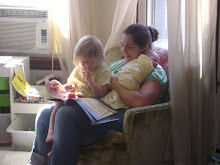 I don't have a one-note palate when it comes to food. I love variety and I love FLAVOR. But I read through gourmet cookbooks and magazines, and I get disenchanted. I don't buy into the idea that I have to invest in a bunch of exotic ingredients if I want to deviate from the basic meat and potatoes, or chicken and cream of *whatever* soup casserole. Budget does not have to equal bland!
I don't have a one-note palate when it comes to food. I love variety and I love FLAVOR. But I read through gourmet cookbooks and magazines, and I get disenchanted. I don't buy into the idea that I have to invest in a bunch of exotic ingredients if I want to deviate from the basic meat and potatoes, or chicken and cream of *whatever* soup casserole. Budget does not have to equal bland!Believe it or not, meal planning becomes easier (and a lot more fun!) once you realize that you can build a perfect companion to your stockpile of food when you start viewing seasonings as an investment in making inexpensive dishes more interesting...
Brick #5 - Invest in your spice cabinet
There aren't many things I'd feel ok about paying a little more for. But good seasonings are one of those things - kind of like that pair of shoes you spent good money on, that end up lasting forever and going with everything you own. With a good set of base spices, you can make one dish take on many personalities.
The cost of spices can be a little daunting. But most basic spices can be found at your local discount or dollar store for a buck or less (for a pretty big container!) and aren't any lesser quality than the brand names. The ones I find most commonly are pepper, cinnamon, paprika, oregano, basil, bay leaves, onion salt, onion powder, garlic salt, garlic powder, and parsley. These alone would provide you with a solid seasoning foundation, especially when you add in liquid seasonings (soy sauce, worcestershire sauce, vanilla) which I usually get at my local discount grocery store for a buck a piece.
But to really get the most mileage out of the food you prepare, you will want to invest in a few more expensive items. The ones I have gotten the most use out of (aside from the list above) are rosemary, tarragon, fennel, thyme, curry, nutmeg, cardamom, celery seed, and dill. If you compare some of your favorite recipes you may find that a few seasonings carry over into multiple dishes - those would be worth adding to your arsenal as well. Just don't be afraid of the price tag. Most recipes call for 1/4 to 1/2 teaspoon of the more expensive spices, because they are richer and a little goes a very long way.
Of course, if you are lucky enough to have a green thumb (I killed a chia pet - don't trust me with your houseplants!) you can grow many herbs either in your garden or on your windowsill, and get all the goodness for free! And the only thing better than inexpensive is FREE :) (I haven't found that fresh herbs from the store are cheaper than bottled, plus they go bad before I can finish using them.) I have also heard that some whole foods stores will sell bulk spices by the ounce, you can bring your own baggies and just get a little instead of buying a whole package. Haven't found that in my area yet but I'm looking! Investigate your spices the same way you are investigating your food prices, and find out where you'll get the most bang for your buck!
If you've been following along this series, you already know what your "pet" foods are - now you can scan your recipes and figure out what groups of seasonings appeal to your family's tastes. Start building with the things you will use most frequently, and then you can add to your arsenal slowly. Choose one pricey spice to try out, and experiment with it a couple of times before you add something else. You'll expand your culinary knowledge as well as your spice rack!
Next time, we'll look at ways to make sure your stockpile lasts long enough to reach the table!
Here are a few base seasoning combinations that will take you on a little trip around the globe:
Mexican: chili powder, garlic, onion powder, salt
Oriental: soy sauce, garlic, onion powder, ginger
Italian: oregano, basil, pepper, fennel and/or rosemary
Indian: curry, garlic, onion powder, sesame seeds, cardamom
Szechuan: soy sauce, ginger, garlic, onion powder, red pepper flake
These are just starting points - with the right spices in your arsenal you can adjust any basic dish and make it as exotic as you like!
Some additional resources:
Ten herbs and spices that will make simple foods pop!
Homemade seasoning blend recipes
Spice substitutions if you don't have the exact seasoning for a recipe
Recipezaar and AllRecipes both have ingredient search options - if you want to try out a new spice just plug it in along with any other ingredients you might want to use, and see what comes up!



















5 comments:
Is there a shelf life for spices? Is it possible to keep them for several years and if so should more be added to make up for any potency lost?
I vote for growing some of your own herbs! We've had great luck with rosemary and oregano; basil in the summer. They make a pretty boring piece of chicken taste pretty amazing! You can also freeze fresh herbs....
@life - most spices have expiration dates right on them, but they usually last a year, some will last two...dried spices don't generally go bad, but they do lose potency. Best way to judge is to taste test, and adjust along the way!
I am not good at growing anything but I have a strong desire to become a gardener. I have been feeling the urge to plant something but was thinking winter is not the right time to be planning my garden but now I think I could start some herbs!
I also wanted to let you know I have a little award for you over at my blog. You can read about it here
http://www.misadventuresofleeann.com/?p=72
Hi I came from your EC at Jenni's. If you're going to help me save money I'll be a loyal follower. Have a great Wednesday!
Post a Comment